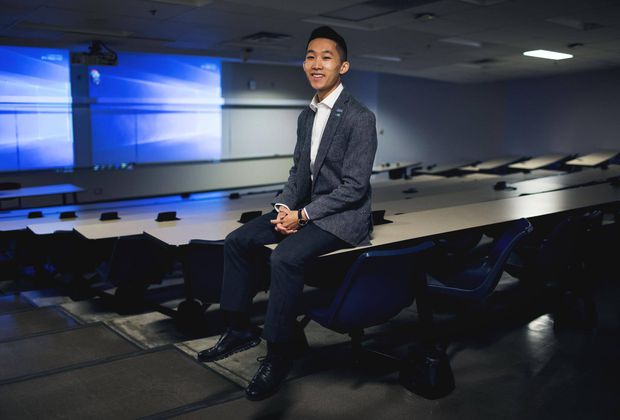When I graduated from high school, I knew I was going to University. Everyone in my life expected it from me; my parents, family, guidance counsellors, teachers, and peers. I internalized those expectations and expected it of myself. It didn’t seem like a choice; it was more like a rite of passage. My friends were all going to Universities, and I would go too.
Today, over 10 years after graduating from university, I now work closely with higher education. This have given me a good insight into the way schools market their programs and a greater connection with the general student attitude towards their education. Many schools market education as an investment, an investment in oneself that will unlock a brighter future. While students buy into the idea that education is an investment, they rarely treat it like one.
If you ask college and university students basic questions about their expected returns from their education, you will often hear anecdotal responses, but few will have a hard objective answer you’d expect for an investment of this significance. Most students have no clear expectations what their educational return on investment (ROI) will be, how long it should take them to break even, or even what is the opportunity cost of their education. How is this possible for what is one of the biggest financial investments an individual makes in their lives?
If you walked into a bank and they offered you an investment that would cost you $50-100K and 2-4 years of your life, under what basis would you make that decision? You’d probably do the math and you make sure you had absolute clarity on exactly how the investment would pay off and when. This is the same way you should think about getting a higher education degree.
So let’s jump right into how you can easily evaluate educational ROI and then we’ll dive into why it matters.
Evaluating educational ROI can be a complex process, there are so many possible outcomes, it would be impossible to predict ROI with pinpoint accuracy. That doesn’t mean you shouldn’t have a baseline evaluation in place.
The great thing about evaluating educational ROI is that we don’t have to reinvent anything. In finance, most people know how to calculate ROI. We can operate on 3 basic formulas to get a good idea.
ROI % = Profit ÷ Investment × 100
Where things get complicated is figuring out how we measure one’s profit from a higher education degree. There are many ways to do this but the simplest way is a self-assessment on earning potential with and without the education. That means to estimate how much you could earn annually today with all your experience and education and then estimate how much you could earn if you had the additional education. For now, we’ll just keep it simple to annual profit.
Profit = Annual earning potential (w/ education) – Annual earning potential (w/o education)
Next, we have to calculate how much the investment will cost us. This is where most students really underestimate the cost of education. Most students only consider direct costs: tuition, books, etc. You also need to consider the opportunity cost. If you were not in school and you could work full time, what would you make? This will typically double the effective investment.
Investment = Direct Cost + Opportunity Cost
We’ll work these formulas with a hypothetical estimate. Let’s say I’m a high school student. I’m looking to attend a 4-year University program with an annual tuition of $15K. We’ll start with the Profit formula. I believe with my high school education I can get $30,000 per year. Through a quick search, I can find that graduates with degrees similar to the one I’m getting earn about $50,000 per year on average.
Profit = Annual earning potential (w/ education) – Annual earning potential (w/o education)
Profit = $50,000 – $30,000
Annual Profit = $20,000
Next, we will calculate our total investment. We know the education is 4 years at $15K, which gives us $60,000. We’ve also already estimated that we can make $30,000 per year without the education so by choosing to get a higher education degree we are losing out on 4 years of full-time work at $30,000, which gives us $120,000.
Investment = Direct Cost + Opportunity Cost
Investment = $60,000 + $120,000
Investment = $180,000
Now we profit and investment numbers we can now use our formula for ROI
ROI % = Profit ÷ Investment × 100
ROI % = $20,000 ÷ $180,000 × 100
ROI = 11.11% return on investment
For those that aren’t familiar with ROI, this means that after 1 year of profit, we’ve only made 11.11% of the money we’ve invested back. If we were to stop here, this investment in education would seem to be a bad investment. But we know careers don’t last only one year.
ROI = (Profit × Years) ÷ Investment × 100
ROI = ($20,000 × 1) ÷ $180,000 × 100 = 11.11%
ROI = ($20,000 × 2) ÷ $180,000 × 100 = 22.22%
ROI = ($20,000 × 3) ÷ $180,000 × 100 = 33.33%
ROI = ($20,000 × 4) ÷ $180,000 × 100 = 44.44%
ROI = ($20,000 × 5) ÷ $180,000 × 100 = 55.55%
ROI = ($20,000 × 6) ÷ $180,000 × 100 = 66.66%
ROI = ($20,000 × 7) ÷ $180,000 × 100 = 77.77%
ROI = ($20,000 × 8) ÷ $180,000 × 100 = 88.88%
ROI = ($20,000 × 9) ÷ $180,000 × 100 = 100%
ROI = ($20,000 × 10) ÷ $180,000 × 100 = 111.11%
ROI = ($20,000 × 11) ÷ $180,000 × 100 = 122.22%
ROI = ($20,000 × 12) ÷ $180,000 × 100 = 133.33%
Based on this we can see using this, it would take us 9 years to break even on our educational investment. This model doesn’t account for promotions or raises, potential unemployment, or inflation, but it gives a baseline framework to calculate an ROI on education that any prospective student should at least mentally go through.
This model is helpful in evaluating one’s projected future income projections on ROI. That if we could bump our starting salary to a higher number, perhaps $60,000 instead of $50,000 it would dramatically change how well our education investment performs. It would mean that instead of taking 9 years to break even, we could now break even in year 6.
The reason this matters is to bring clarity and make you more conscious of how you profit from an investment in higher education. Most students are so focused on getting to graduation they focus disproportionately on things like grades, assignments, and academics. As a student you need to realize that return on educational investment does not come at graduation, in fact, graduation marks the point in time where your educational ROI is at its lowest. The employment market is where you will realize your return. It is where you get paid for your investment in education. That means while you are working towards your degree, you should also be preparing to succeed in the employment market. Creating and developing valuable industry connections, honing and developing your self-marketing skills, and ensuring that you hit the ground running after graduation is critical to realizing the best ROI from your degree.



